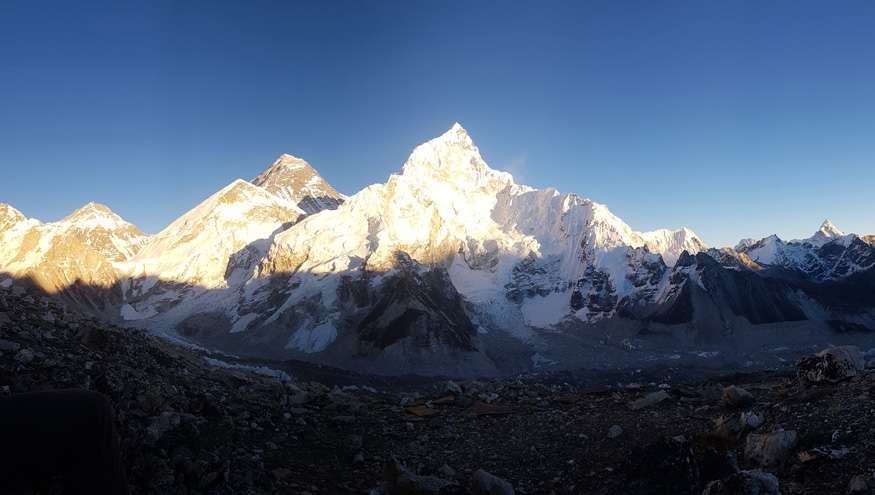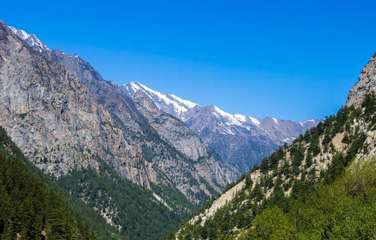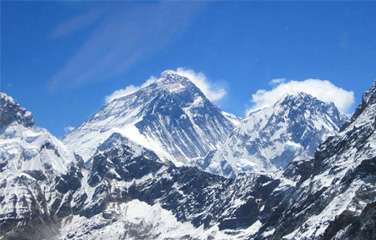Useful Information
Phaplu to Everest Base Camp Trek route
The trek begins with a short flight to Phaplu from where you gradually begin ascending towards Namche Bazar via Nunthala, Paiya, Ghat, etc villages. The trail passes through many other small villages, crossing dense forests and small passes. From Namche Bazar, you move towards Everest Base Camp. The trail goes through beautiful villages like Tengboche, Dingboche, and Lobuche. You further hike up to the Kala Pathar and descend to Lukla, where Phaplu to Everest Base Camp Trek ends.
Phaplu to Everest Base Camp Trek difficulty & Altitude Sickness
Phaplu to Everest Base Camp Trek is a moderate trek. The trail involves mixed terrain with several ascends & descends. You have to walk on a rugged and steep path. Likewise, 5 to 6 hours of the walk is required every day on minimum, therefore you have to be in good health and shape to join this trek.
Trekking in the Everest region takes you to high altitude, which makes the journey difficult in itself. There is a risk of altitude sickness as well. Similarly, you may also get Khumbu cough because of the cold and dry climate. Adding ample rest days in the itinerary and keeping yourself hydrated is the key to a safe and successful journey.
Best time to go on Phaplu to Everest Base Camp Trek
Autumn (September to November) is the best time to go on Phaplu to Everest Base Camp Trekking. The weather is stable and the climate is soothing, perfect for trekking. You will see many fellow trekkers during this time of the year. Likewise, spring (March to April) is another best time to visit Everest Base Camp. Trekking in the off-season (monsoon & winter) is not recommended because they bring the risk of avalanches and trail blockage.
Accommodation & Meals
You stay overnight in lodges during Phaplu to Everest Base Camp Trek 18 Days. Because the Everest region is one of the most developed trekking regions of Nepal, you will find lodges offering basic to luxurious services. The normal lodge usually has a small room, twin-sharing beds, and a common washroom. As the elevation will increase the services in the lodge gets minimal.
The meals will be served as per the menu of the lodge. The best thing about trekking in the Khumbu region is that you will have a range of dishes available to dig in, at least in Namche Bazar. Cuisine like Nepali, Tibetan, Indian, Continental, Chinese, etc can be seen on the menu.
Communication & Electricity
Electricity is available throughout the trail. You may or may not get a charging facility depending on the village you are stopping at, therefore carry extra batteries with you. Moreover, the lodge owners may charge a few extra bucks for charging your device. The cellular network is available up to Everest Base Camp, but due to high altitude, there can be a network disturbance. Carrying a local SIM card is advised for better service. Wifi is also available in many villages for free or paying a small cost.
Travel Insurance
Even with proper planning and all the measures, no one can predict weather and unseen circumstances in the Himalayas. Therefore, travel insurance is a must to have for your own safety. Air evacuation, hospital bills, medical bills, flight cancellation, etc are a few of the things your travel insurance must cover.
Guide & Porter
A guide is very important to have for successful and safe trekking. Regardless of your experience, the Himalayan trail cannot be underestimated. Therefore, we highly suggest you trek with a guide. We provide native licensed trekking guides during the trek who will not only show you the path but also introduce you to the region. Similarly, porters will help to smooth the journey.
Environmental Contribution
Trekking in the Himalayas comes with a great deal of preparation and proper planning. To make sure our journey does not harm the fragile environment, we have been applying multiple efforts from collecting our wastage to carrying eco-friendly equipment. Moreover, we also run a small organization that funds education for children from underprivileged mountain families.





